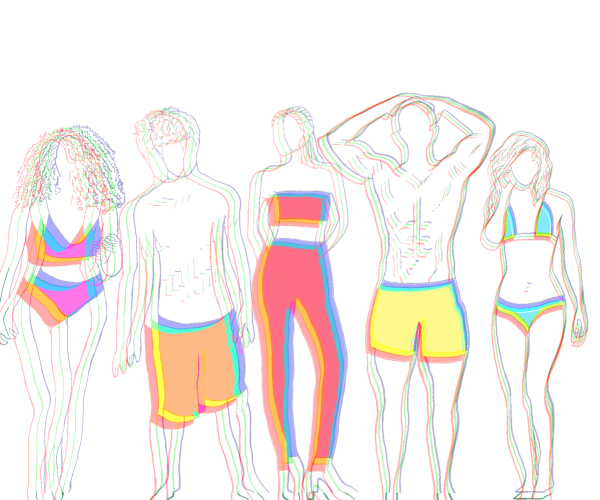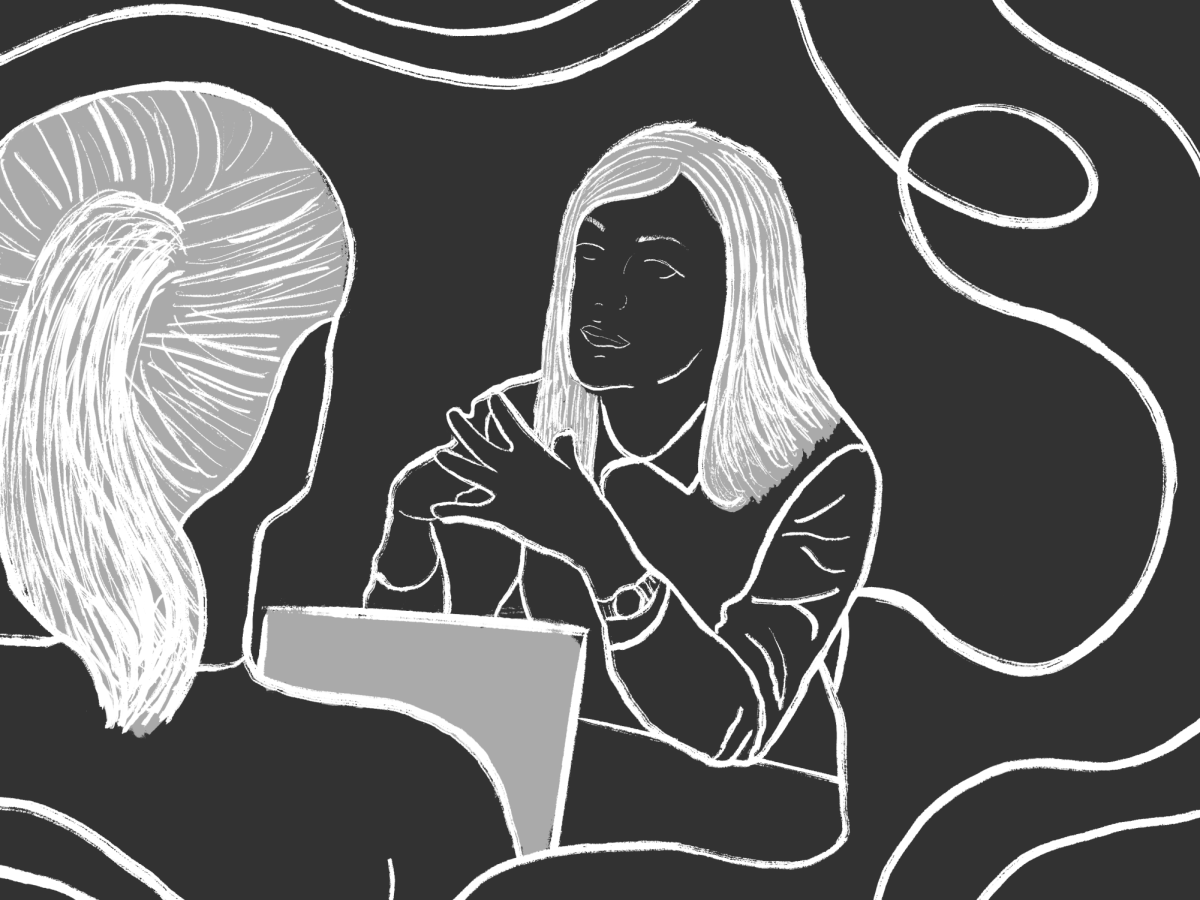
In a society that favors physical appearance and aesthetics, the word “diet” is ceaselessly coursing through our social media. This phenomenon is perpetuated by societal standards that favor thinness and body shape over one’s health and well-being, also known as “diet culture.” This perfectionistic lifestyle has curated distorted habits followed by skewed perceptions of health as seen in magazines, movies, TV shows, books, social media, etc. In correlation, these platforms promote restrictive eating, which defines itself as an eating disorder in which the individual significantly limits the volume or variety of foods they consume. Restrictive eating gives food the moral high ground by deciding whether it’s “good” or “bad” and further fosters hyper-fixation on our body shape and size. This delusory content enforced upon us regresses back years into our history of human evolution, which is amongst all ages, genders and ethnic groups. Before diet culture, our society was in tune with holistic health principles, which is an approach to wellness that simultaneously addresses the physical, mental, emotional, social and spiritual components of health. The past is not repeating itself, rather it is evolving to maintain an unattainable body shape that society favors; while your mental health deteriorates, your internal health pays the ultimate price.
To comprehend the evolution of diet culture, we must revert back to the emergence. The Social Health Research Center states the first ideas within the fitness and health realm were cultivated by the ancient Greeks. Their motive behind this lifestyle held pure intent, in which they believed that sustaining a healthy body was parallel to a healthy mind. In addition, ancient Greece was the birthplace of the modern Olympics, where fitness and strength shaped their culture. In contrast to society’s renowned definition, the ideal body of the Greeks was not based upon a person’s visual physique but rather their physical abilities.
The contemporary media has displayed this discourse within the 2024 Olympics amongst several athletes, where their varying body types have been assessed and scrutinized to an impractical figure sculpted by society. The Olympic games are considered the world’s foremost competition, featuring a variety of the most elite athletes within 40 different sports. Athletes train consistently throughout the year to reach optimal health and fitness in order to compete, though that does not mean they do not endure society’s pressure due to their athletic significance.
World renowned Olympian, Ilona Maher, is known for her talent as a female, American rugby player and a body positive enthusiast who has struggled her entire life with labels such as being “overweight” and displaying a more “masculine” physique. Numerous athletes face this scrutiny as a consequence of not complying with the “ideal body type.” In obedience to this ideology, Eating Disorder Hope claims that athletes are uniquely vulnerable to disordered eating and exercise behaviors due to the relationship their athletic performance has with their nutritional intake and training schedule. Alarming statistics show that 13.5% of athletes struggle with an eating disorder, and 42% of female athletes competing in aesthetic sports demonstrate eating disorder behaviors. The prevalence is even higher at the collegiate level, where 84% of college athletes have at one time engaged in disordered patterns of eating or weight control behaviors. Athletes are constantly being shamed for being too muscular as women, or being too petite as men, which infiltrates the desire—the addiction—to favor physique over physical health.
While we continue to evaluate the transgression of health, these paradoxical stereotypes arose in the mid-1800s, where health suddenly became in unison with beauty, and women began attaining unhealthy figures; where their happiness relied on how small their waist appeared. In harmony with aesthetics, the Social Health Research Center states that “diet” refers to the total amount of food and drinks consumed. It wasn’t until the early 1900s that this word redefined itself as a means to restrict food intake with the intent to lose weight or alter one’s physical appearance. As the thin ideal grew more popular, the first male influencer to embody this physique was Lord Byron. The British poet was adored by many and was even considered the most beautiful man by the Victorians. This appeal fed his unhealthy desire to cultivate a diet of starvation, binge eating, and an excessive amount of exercise, which we commonly see today.
A female figure that began the initiation of this warped culture was the Victorian empress of Austria, Elizabeth Amelie Wittelsbach. Her daily regimen encompassed strenuous physical activity, starvation and using emetics to maintain a sickly thin frame. Similar to Lord Byron, she was notorious for her beauty amongst women in the 19th century of Europe. Her demanding beauty routine externally gifted her a slender, slim frame, while it simultaneously stole her internal health and happiness.
Modern day duplicates of Elizabeth Amelie Wittelsbach and Lord Byron are scattered all throughout our feeds, and sadly found within most of the population. These dangerously alluring mannerisms featuring harmful habits has put its consumers in a trance, unable to break the spell that demolishes health and psychological contentment. Esteemed influencers and celebrities such as Kim Kardashian have taken this addiction to extreme lengths with the assistance of present-day technology, money and fame which gives them a platform to feed this unfeasible body type and distorts the motive of beauty aesthetics.
Kardashian has a colossal following on social media, with 360 million followers on Instagram, where she posts edited photographs highlighting her altered body, masking all the cosmetic surgeries to be deceived as her natural frame. She has subconsciously influenced this misconception that in order to be successful, admired or famous, you must surrender yourself in a similar fashion to be accepted. Pursuant to CU Anschutz Newsroom, she promotes these unhealthy principles in photoshopped pictures, within her TV series and publicly pushes products from detox teas to controversial waist trainers.
Furthermore, a fashion stunt conducted by Kardashian claimed publicly that she lost 16 pounds in just three weeks to fit into a Marilyn Monroe dress for the 2022 Met Gala. Kardashian went on record saying, “If I did this in an unhealthy way, I wouldn’t be talking about it.” In contradiction to this statement, medical experts from CU Anschutz Newsroom fought back saying that losing that amount of weight in the allotted time is not only unhealthy but is exceptionally murderous to one’s mental and physical state. Kardashian is arguably seen as the most quintessential woman in modern day beauty and aesthetics, but this begs the question: how prominent is promoting disordered eating all for the physical appeal?
As we look at how this philosophy has evolved, it is evident that our society has taken history and intensified the lengths that individuals are willing to go to achieve this body type. In line with the National Eating Disorder Association, body image concerns have been reported to begin at the early ages of 3-5, where children have often internalized stereotypes about their body size and weight. As we age, it was reported that 69-84% of women experience body dissatisfaction, and one study discovered that 90% of boys were dissatisfied with their muscularity.
While we live in the age media that enforces diuretics, Facetune and Ozempic; this visual and ideology is constantly being imposed on us. The statistics have only grown more severe, and the results have surmounted to fatal health effects. The National Eating Disorder Association disclosed that 9% of the US population, or 28.8 million Americans, will have an eating disorder in their lifetime, and 22% of children and adolescents worldwide display disordered eating. Eating disorders have the second highest mortality rate of any psychiatric illness behind opiate addiction, and every 52 minutes one person dies as a direct consequence of an eating disorder. This disturbing demography isn’t enough to alert society that it needs salvation in order to restore its livelihood. There are various influencers similar to Kardashian, flaunting their bodies with an assortment of popular cosmetic procedures such as liposuction, rhinoplasty, breast augmentation and laser hair removal, while they all claim to be natural. This discrete kind of deception not only influences the desire to achieve this hourglass figure, but it also ingrains insecurity into one’s mind that something must be altered to our bodies in order to reach a state of satisfaction.
From the civilization of ancient Greeks to the modern world in 2024, the transgression has only grown darker and more gruesome. Society is being brainwashed to interpret health as a beauty standard, not as a sustainable lifestyle. Formerly, health encapsulated the essence of muscle, power and solidity to embrace one’s athleticism. In the present day, we crave how we appear instead of how we feel. We are willing to sacrifice our emotional welfare all for a tiny waist, jutting ribs and bone-thin arms to be accepted and receive praise by society. Being skinny is not parallel to your happiness, and eating disorders are far from glamorous. Do your part in society to decimate the “ideal body type” and take back what health once defined itself as.
If you are seeking help or in need of support, call or text the National Eating Disorders Association helpline at (800) 931-2237.
If you are in an immediate crisis, text “NEDA” to 741741 or call the National Suicide and Crisis Lifeline at 988.




















Carol Emerson • Sep 18, 2024 at 3:08 pm
WOW- So beautifully written & so very inspirational!
Kate Mazzella • Sep 18, 2024 at 8:31 am
So nicely written. Amazing amazing